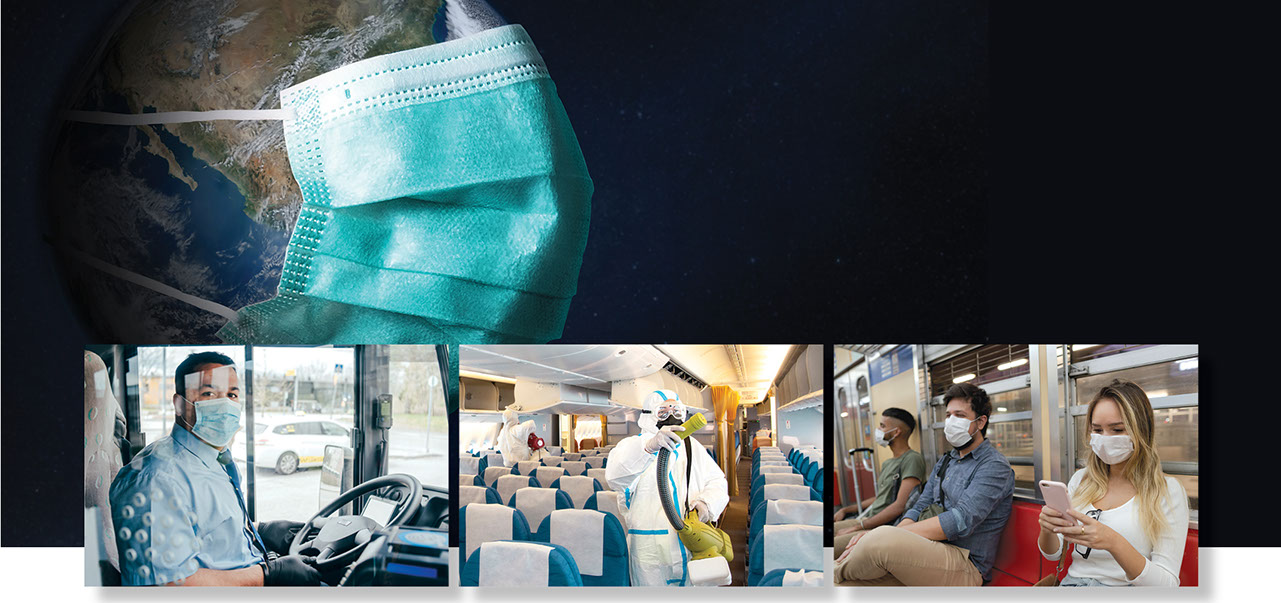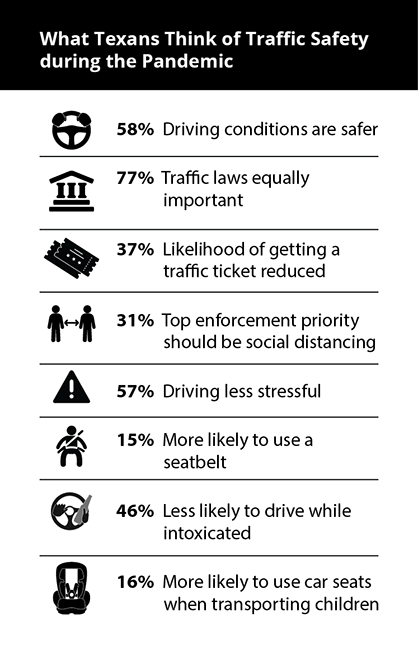
VOLUME 6, ISSUE 1
MENU

Surveying Texas Driver Perceptions of Traffic Safety During the Pandemic
Soon after the Governor of Texas declared a stay-at-home advisory for the state, dramatic shifts in traffic volumes, patterns, and crashes occurred. Anecdotal evidence and news reports suggested that roads were either safer due to far less risk exposure (fewer cars on the roadways) or more dangerous due to excessively risky behavior of drivers on less-congested, higher-speed roadways.
The Texas A&M Transportation Institute’s (TTI’s) Center for Transportation Safety (CTS) conducted a survey in April 2020 to determine if the COVID-19 pandemic influenced drivers’ views and behaviors related to traffic safety. The 20-question online survey of 489 Texans was conducted between April 16–27, 2020 and addressed several questions focusing on traffic safety and the COVID-19 pandemic, such as:
• how the public perceived and responded to observable changes in traffic conditions,
• how Texan’s view traffic safety relative to other safety and health concerns in the wake of a global pandemic, and
• how self-reported behaviors changed before and during the pandemic.
“The purpose of the Traffic Safety Monitor, supported by CTS, is to be able to measure public perceptions of traffic safety issues in a timely way, says TTI Senior Research Scientist Katie Womack. “Rarely has anything in the traffic safety arena happened with such immediate and consequential impacts as the pandemic-related shutdown. This survey was launched to get initial reactions from the public as related to changes in behavior, relatively safety, and perceptions of traffic conditions.”
Survey Findings
In general, most Texans surveyed believed that driving conditions were safer (58 percent) and less stressful (57 percent) in April during the shelter-in-place condition than before the pandemic. Thirty-seven percent of respondents also believed the likelihood of getting a ticket was less likely, due to the belief that the top three areas for enforcement during the pandemic should be focused on:
• social distancing measures,
• essential travel enforcement, and
• traffic laws.
This majority of people surveyed (90.6 percent) recognized they were under a shelter-in-place or stay-at-home order, and their transportation use reflected it. All types of motorized travel were reported to be used less, bicycle and scooter rentals remained stagnant, and the only form of transportation that increased during the pandemic was walking for recreation, noted by 48 percent of respondents.

The survey also included questions about changes in recent driving behavior. Approximately two-thirds said they were no more or less likely than before to speed or drive distracted. However, 15 percent reported they were more likely to use a seat belt than before, and 46 percent said they were less likely to drive while intoxicated. Respondents (49 percent) were less likely to transport children during the pandemic, but more likely to use car seats when doing so (16 percent).
“We hope this particular survey will not need to serve as a benchmark for future similar surveys” says Womack. “However, it is noteworthy that, while risky behavior, especially speeding, has been documented as escalated during the pandemic, other behaviors were more stable. These insights may prove useful for a basis of comparison in the future.”

The majority of people surveyed (90.6 percent) recognized they were under a shelter-in-place or stay-at-home order, and their transportation use reflected it.

“Rarely has anything in the traffic safety arena happened with such immediate and consequential impacts as the pandemic-related shutdown. This survey was launched to get initial reactions from the public as related to changes in behavior, relatively safety, and perceptions of traffic conditions.”
TTI Senior Research Scientist